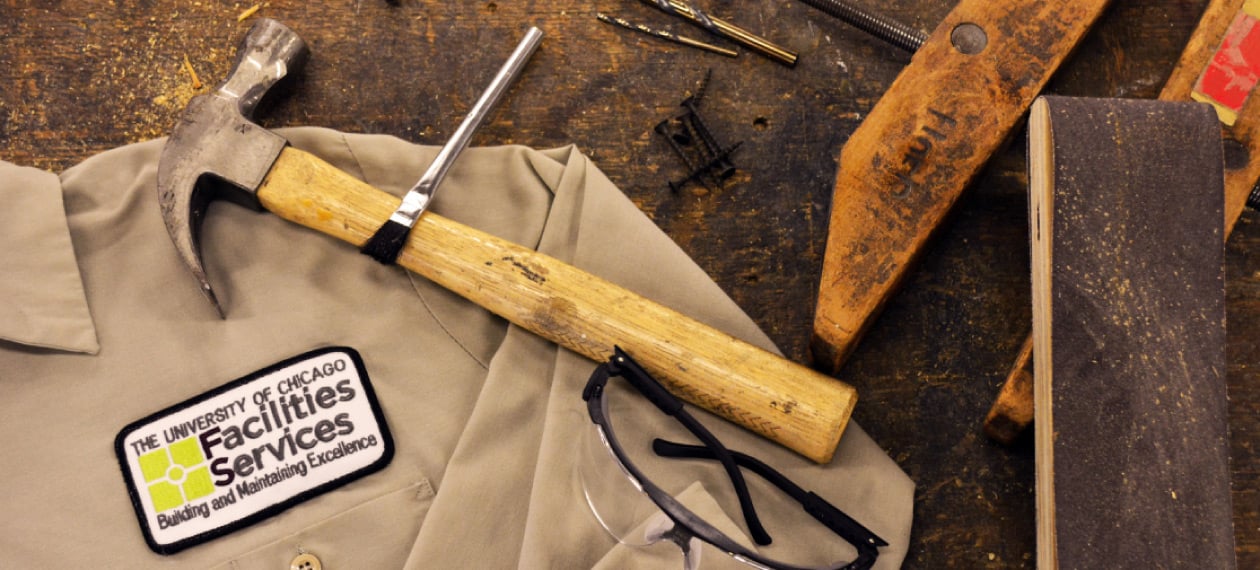As Executive Director of Capital Project Delivery at the University of Chicago, Kerry Galbraith has a lot on his plate: about $100 million in work each year, roughly 85 percent of which is deferred maintenance projects under $2.5 million. It’s a high calling, and his stakeholders have equally high expectations.
“The University of Chicago is a research institution, so we are dealing with folks who are just highly intelligent, highly motivated,” he said at the Higher Ed Facilities Forum. “They want to know exactly what we're doing. They want to challenge us. They want to understand. And that makes it very difficult.”
Half a decade ago, Galbraith’s team decided it needed to make some changes to better serve its community. To figure out exactly what those changes should be, it enlisted APPA’s Don Guckert, who identified a range of issues that largely aligned with its own sense of what needed fixing. While Galbraith and his colleagues planned to apply for APPA’s Award for Excellence in Facilities Management – and to use that potential honor as a motivator – they ultimately realized it wasn’t really about the award.
“It was about the whole journey,” he said. “We wanted to go along and become better at what we did, not just to get the Award for Excellence but to be better in the longer term, to make our clients happier, to make our job easier, to make our team work better as an organization.”
During his presentation, Galbraith explained what it took to change his department’s culture and why it was worth the effort.
Ownership and Happiness
After leveraging an early-pandemic lull in facilities work to focus on rebuilding his team, Galbraith turned to the broader organizational structure of his department. The first step was to transition from a project management model to a program management model – not just in its design and construction work, but also in planning, operations, and finance. In embracing a more holistic approach, he hoped to put a greater emphasis on employee happiness, which in turn would help ensure more successful projects.
Equally important is ensuring a sense of ownership over every step of the process.
“How do people across the whole organization feel after a project is executed?” he asked. “Are they happy with the actual handover process from construction to operations? Is the planning group happy when it moves across from planning into design? We went back and we just talked to individuals at all points in the process and got their feedback to understand their perspectives and to help us define what success means to help motivate those individuals.”
Equally important is ensuring a sense of ownership over every step of the process: if latent design flaws only emerged once a project went into operations, for instance, the design lead will be responsible for addressing it. A top-down messaging strategy, run by a designated internal communications lead, seeks to keep employees supported through whatever challenges emerge – supply chain issues, design issues – while a renewed focus on the client helps ensure their definition of success guides each project.
“That messaging and that communication has helped bridge so many issues that we've had,” Galbraith said. “Clients who were just so frustrated with us before…there’s always challenges, there's always problems, but they're a lot more forgiving when they know what's going on.”
Horizontal Engagement
Another key component of the cultural reset: finding individual team members, those committed to the organization’s values, who can help champion cultural changes throughout it.
“We want to help change the perspective of the individuals and operations to be from one of conflict to one that they're embracing the whole process,” he explained, recalling a DEI session in which concerns emerged that project managers weren’t listening to operations team members. “That was astounding to us to hear,” he said. “We wanted to understand why they had that perception and then address that perception. So we identified individuals in our organization to engage horizontally, to help bridge those gaps and bring down those barriers.”
Another key component of the cultural reset is to find individual team members who can help champion cultural changes throughout the organization.
Another prong of that horizontal engagement strategy is the particular attention paid to the concerns of more tenured employees, ensuring that older team members still have a voice. By supporting his workers at every level of his department, Galbraith hopes to retain essential talent at a time when they have no shortage of other options. That’s in part why he’s also exploring a hybrid work model. “If we don’t do that, it’s a hot market out there,” he said. “People will leave to go and work somewhere that they can just be 100 percent remote.”
One product of all these cultural changes was indeed an APPA Award for Excellence in Facilities Management in 2021. But more importantly, Galbraith said, it earned his department a seat at the table at the University of Chicago.
“It's helped us get that seat at the table because everyone understands what we're doing,” he concluded. “It's a lot more transparent. They understand it. And they're more prepared to engage. Our next challenge is to keep the seat at the table while we have it.”

Posted by
Join us at HEFF!
An interactive retreat for facilities leaders at the nation's top colleges and universities.
Nov 8-10, 2026 | San Antonio, TX
Learn More









Comments